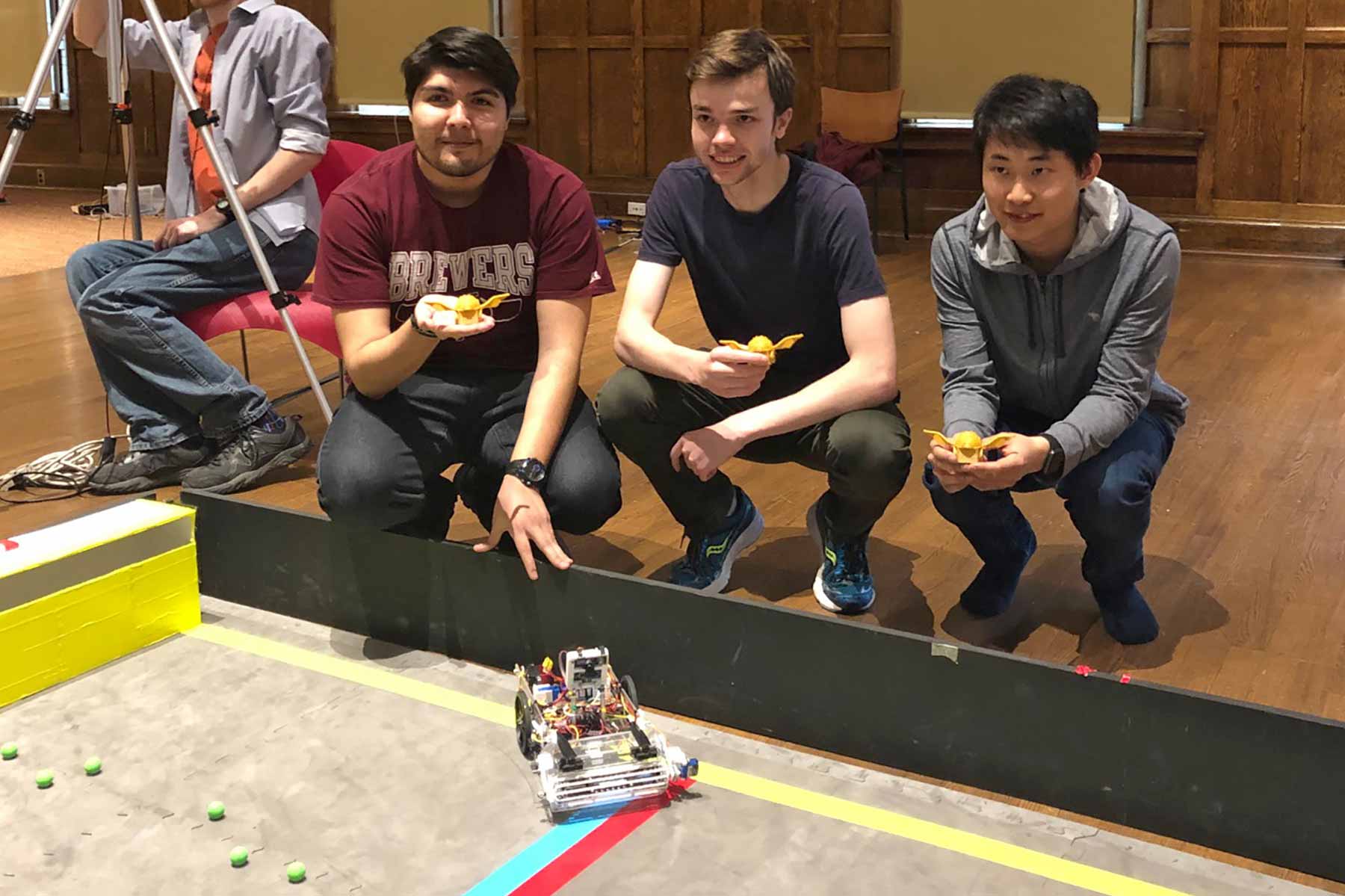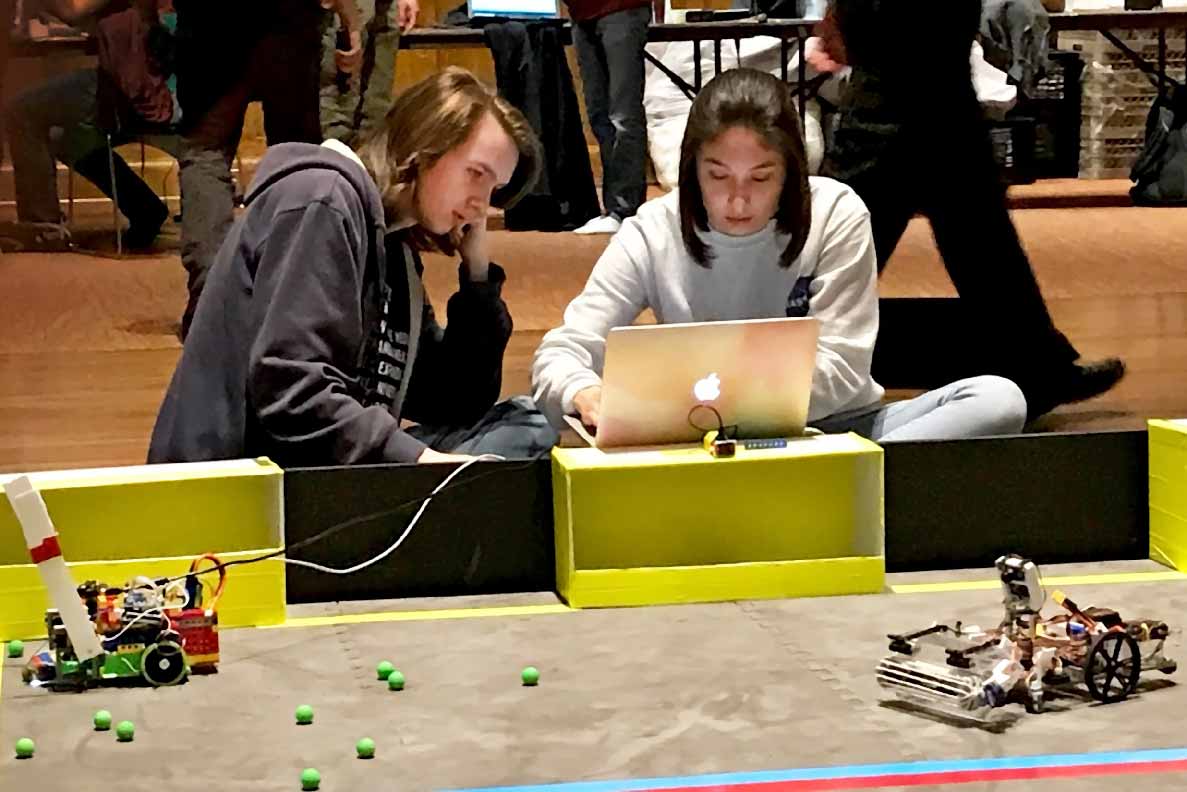Robotics Competition Goes to Hogwarts
Robotics Competition Goes to Hogwarts
It was bound to be only a matter of time before the study of robotics at Vassar would intersect with the Hogwartsian game of Quidditch. It happened on the final day of Vassar’s Autonomous Robotics class, taught by Assistant Director of the Interdisciplinary Robotics Lab, and Harry Potter enthusiast, Nicholas Livingston.

The clear winners of the competition were Tomas Ponce ’21, Ben Krantz ’19 and Lingxiu Zhang ’21 of Team Yellow, whose robot gobbled up 10 quaffles in the championship round and delivered each of them into the most challenging target. Their first-place “trophies” were plastic snitches that Livingston crafted with a 3D printer.
Team Yellow’s imposing showing in the finals was a marked improvement over its performance in the opening round, when its robot failed to put a single quafffle into the goal. After the first round, Ponce said, he and his teammates noticed that the sensors that were designed to help the robot face the target squarely weren’t working properly. They made the adjustments, and in front of a cheering crowd that included children from Vassar’s Wimpfheimer Nursery School, Team Yellow marched on to victory.
Livingston, who taught the Autonomous Robotics course for the first time this year, said he was impressed with the work of all 12 students in the class. “All four teams hit all of the milestones they needed to reach the competition,” he said. “All of the teams had some trouble in the early rounds, because the robots were performing in a new environment where the light was a lot different from the lighting in the robotics lab. But I was blown away by how Team Yellow performed in the finals.”

Members of Team Yellow said they didn’t know each other until they were chosen at random to build a robot together for the class. Krantz, a computer science major from Seattle, and Zhang, a cognitive science major from China, wrote most of the code, while Ponce, a computer science major from Phoenix, was in charge of the hardware. “We went through several design plans during the semester before we came up with the final product,” Krantz said.
Livingston said watching the teams evolve had been a rewarding experience. “Some of these teams went through two or three complete design changes as the semester went on,” he said, “but by the end of the competition, I was thrilled to see the progress they all had made.”